Kabinett is a delicate and elegant type of German wine that offers exceptional quality and finesse. Representing the first level of ripeness in the German wine classification system, the term “Kabinett” refers to the fact that these wines were historically so prized, they were kept in a separate cabinet in the wine cellar. Made from fully ripened grapes, Kabinett wines are typically low in alcohol, with a natural sweetness balanced by a refreshing acidity.
Flavors and Aromas of Kabinett Wine
Germany is renowned for its exceptional Riesling grapes, and Kabinett wines are a prime example of the delicate yet flavorful expressions of this variety. Known for their bright fruit flavors and crisp, lively acidity, Kabinett wines are best consumed young to fully appreciate their vibrant character. High-quality Kabinett wines are produced in multiple regions across Germany, such as the Mosel, Rheingau, and Pfalz, each lending its own unique attributes to the wine.

Which Food with Kabinett Wine
Kabinett wines are perfect accompaniments to a range of dishes, from light appetizers to seafood or poultry dishes. Their subtle sweetness, coupled with the bright acidity, makes them an excellent option for food pairing, while their moderate alcohol content makes them ideal for enjoying in a relaxed setting. This distinctive style of German wine is a true testament to the country’s rich winemaking heritage and the skillful art of balancing sweetness and acidity in wine production.

Origin and History
Kabinett Wine finds its roots in the vinicultural regions of Germany, most notably in the Mosel and Rheingau areas. This fine wine is recognized for its delicate and distinctive flavor, primarily derived from its region of origin and the winemaking process.
Mosel
In the Mosel region, Kabinett Wine is particularly cherished for its integration of the natural landscape and ideal growing conditions. This area is characterized by steep slopes and an abundance of slate soils, which contribute to the unique terroir. The Mosel River, a key geographical feature, also plays a vital role in moderating the climate and providing the necessary moisture for vine growth.

Rheingau
The Rheingau region, located along the Rhine River, is renowned for its long history of viticulture and wine production. This area cultivates some of the finest Riesling grapes used in Kabinett Wine. The Rheingau’s mild climate, diverse soil composition, and optimal sun exposure lead to well-balanced wines, enriched with the ideal combination of acidity and sweetness.
Kabinett Wine has evolved over time, thanks to the introduction of the German Wine Law in 1971. This legislation put forth a classification system that defined wines according to their level of natural sugar content. Consequently, Kabinett Wine is classified as the lightest and least sweet of the various German wine categories. However, its exceptional flavor and refreshing nature have established it as a much sought-after wine variety.
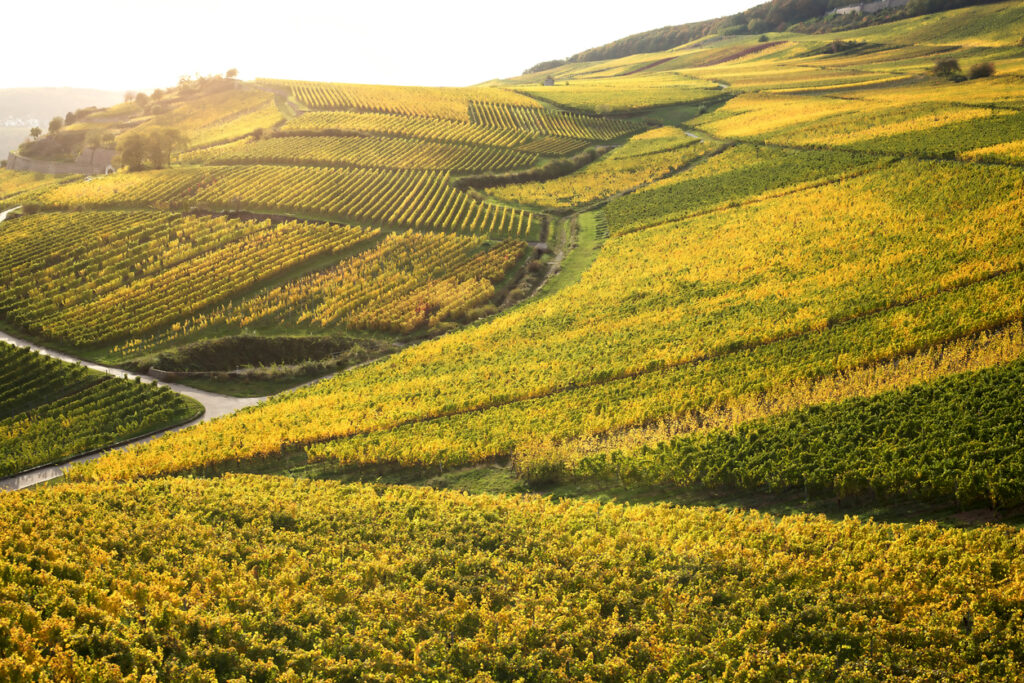
In summary, Kabinett Wine’s origin and history are deeply rooted in the winemaking traditions and unique terroir of the Mosel and Rheingau regions. Its enduring reputation for exceptional taste and quality is a testament to the skill and dedication of those involved in its cultivation and production.
Kabinett Wine Grape Varieties
Kabinett wines are a classification within German wine production, primarily focused on the quality and ripeness levels of grapes. As one of the lower levels in the hierarchy, Kabinett wines are typically light, fruity, and have lower alcohol content. The main grape variety associated with Kabinett wines is Riesling.
Riesling is a white grape variety originating from Germany, known for producing wines with high acidity levels and pronounced fruit character. It is widely considered as one of the finest white wine grapes in the world and is a defining component of German winemaking.

In Germany, Riesling grapes are typically grown in cooler climates, which contributes to their outstanding characteristics. These grapes have thinner skins and a longer ripening period, allowing them to develop complex flavors and aromas while retaining their natural acidity. This balance between sweetness and acidity is crucial in producing high-quality Kabinett wines.
Apart from Riesling, there are other grape varieties occasionally used in Kabinett wine production. Müller-Thurgau, Silvaner, Scheurebe, and Kerner are examples of alternative grapes that may be found in Kabinett wines, depending on the region and the winemaker’s preference.
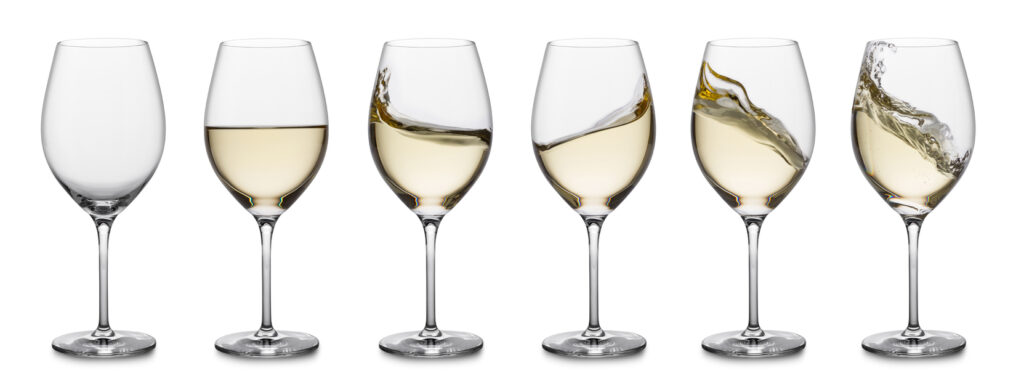
Each grape variety brings unique characteristics to Kabinett wines:
Müller-Thurgau
This is a white grape variety that produces wines with lighter body and lower acidity compared to Riesling. It may also have floral and fruit flavors, such as peach or apricot.
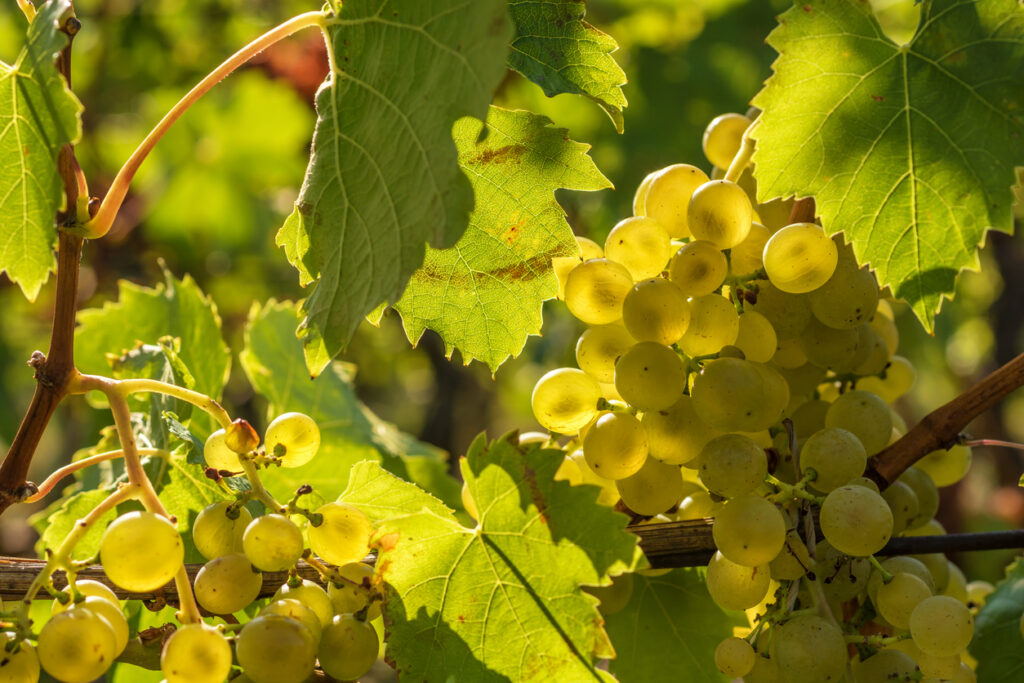
Silvaner
This white varietal is another grape with a more neutral taste profile, which allows it to take on the characteristics of the terroir and showcase the winemaker’s expertise.
Scheurebe
It is a cross between Riesling and Silvaner, with intensified fruit aromas and higher acidity, resembling a more aromatic Riesling.
Kerner
A white varietal which is a cross between Riesling and Schiava, offering a blend of the Riesling’s acidity and the Schiava’s fruity sweetness.
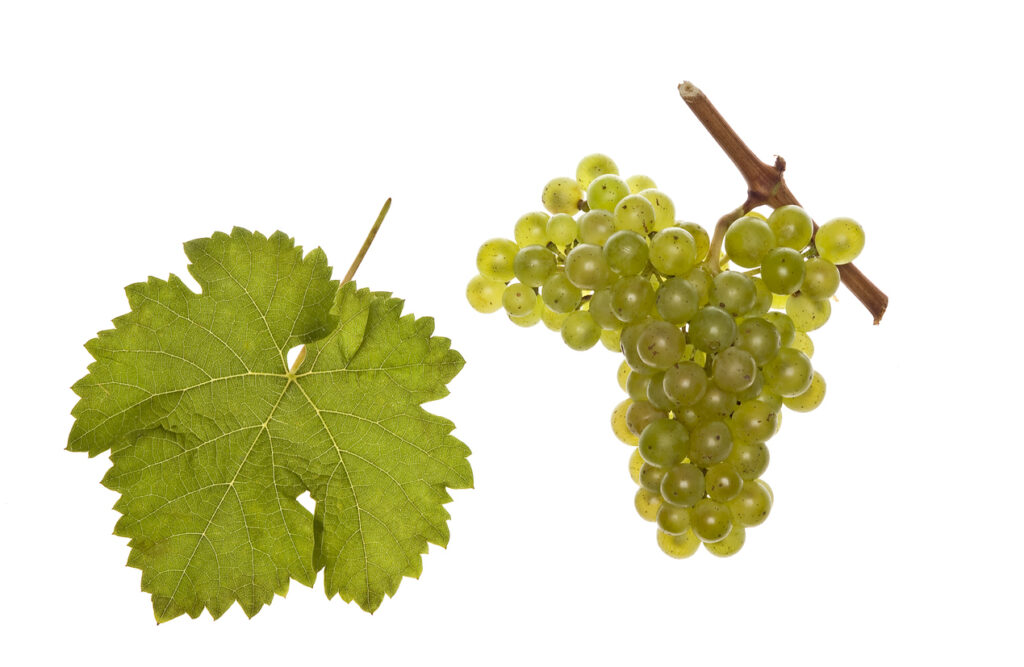
In conclusion, the Kabinett wine classification primarily focuses on Riesling grapes, which are known for their high acidity and fruity characteristics. However, other grape varieties such as Müller-Thurgau, Silvaner, Scheurebe, and Kerner may also contribute to the distinct flavors of Kabinett wines. The choice of grape variety will depend on regional preferences and the winemaker’s style, leading to a diverse array of Kabinett wines for enthusiasts to explore.
Quality Levels and Prädikat System
In Germany, the wine classification system consists of various quality levels dictated by the Prädikat System. This system designates different categories of wine based on the maturity of the grapes used, which reflects on the sweetness, acidity, and overall balance of the resulting wine. The Prädikat System helps in categorizing wines into Qualitätswein and Prädikatswein, with the latter being superior quality.

There are two primary categories of quality wine in Germany: Qualitätswein bestimmter Anbaugebiete (QbA) and Qualitätswein mit Prädikat (QmP). Qualitätswein refers to quality regional wine that is sourced from one of the 13 designated wine-growing regions of Germany. It has to meet specific criteria in terms of grape variety, origin, and quality. On the other hand, Prädikatswein represents the highest quality level of German wine, which encompasses six sub-categories ranging from dry to very sweet. These sub-categories are, in increasing order of ripeness and sweetness:
Kabinett
Light, fresh wines made from fully ripe grapes. They are usually low in alcohol and can be dry, off-dry, or sweet in taste.
Spätlese
Meaning “late harvest,” these wines are produced from grapes that have been left on the vine longer, resulting in a richer and more full-bodied flavor. Spätlese wines can also range from dry to sweet varieties.
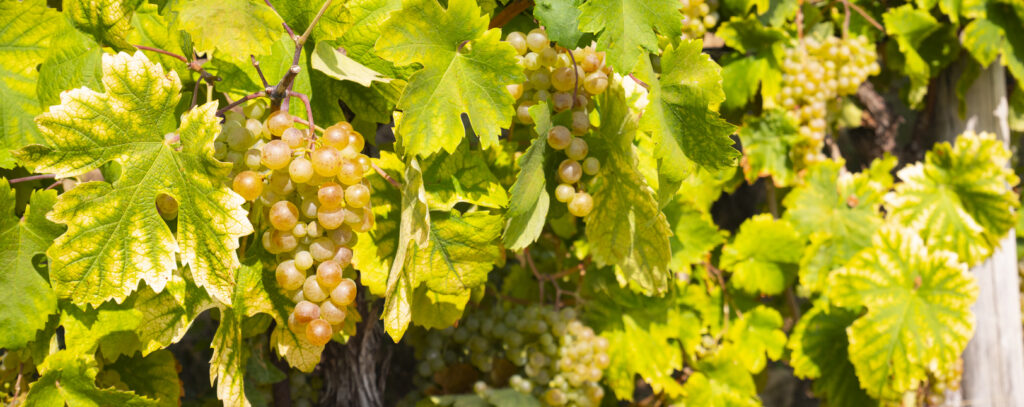
Auslese
These wines are crafted from selected, very ripe bunches of grapes, leading to wines with intense flavors and increased sweetness. The resulting wines are highly concentrated and can be either dry or sweet.
Beerenauslese (BA)
A dessert wine made from individually hand-picked, overripe grapes that are affected by noble rot. This category of wine delivers a rich, sumptuous sweetness balanced by high acidity.
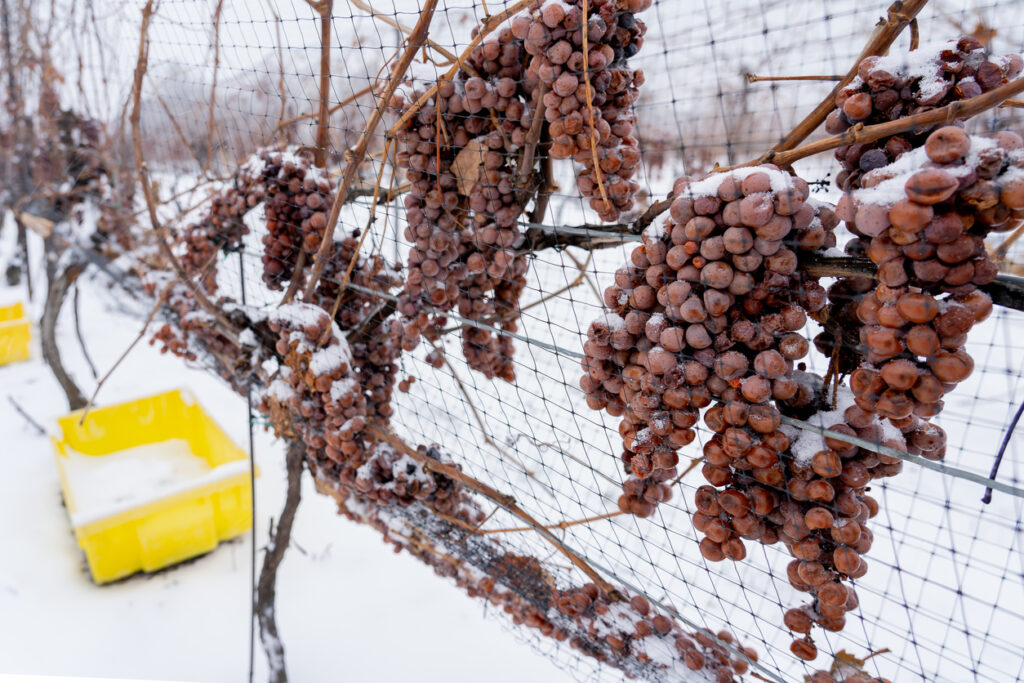
Trockenbeerenauslese (TBA)
Produced from individually picked, extremely overripe grapes shriveled by noble rot, these are intensely sweet, rare, and expensive wines with exceptional longevity.
Eiswein
Made from grapes that are left to freeze on the vine, Eiswein is a concentrated, sweet wine, packed with flavor and high acidity. It does not undergo the influence of noble rot, unlike BA and TBA wines.
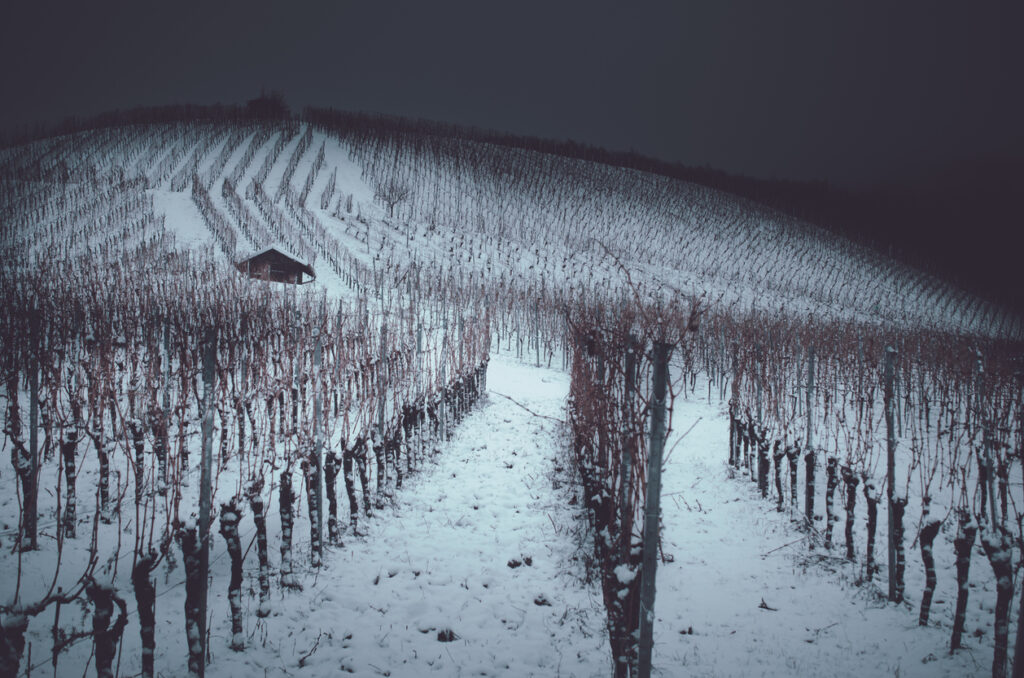
The Prädikat System offers a consistent method for understanding the quality and style of wines, making it easier for consumers to make informed decisions when selecting a German wine. By identifying the key qualities of Kabinett wines and appreciating the role of the Prädikat System, one can gain a deeper understanding of the diversity and richness present in German wines.
Styles and Characteristics
Kabinett wines, originating from Germany, are known for their distinct characteristics and styles. Riesling Kabinett is among the most popular within this category, offering a diverse range of flavors and aromas.
When it comes to ripeness, Kabinett wines are made from grapes harvested at their earliest stage of maturity. This early harvesting allows for a lower sugar content and a heightened acidity, resulting in a naturally balanced and vibrant wine. The acidity level in Kabinett wines is a distinguishing factor, contributing to their longevity and making them excellent candidates for cellaring.

The aroma of Kabinett wines, particularly Kabinett Riesling, is often described as delicate and fruity, with notes of green apple, citrus, and stone fruits. Additionally, these wines exhibit a distinct minerality, as many German vineyards are rich in slate and other minerals. This minerality lends a unique and complex flavor profile to the wine.
In summary, Kabinett wines, including Kabinett Riesling, showcase:
- Early ripeness and lower sugar content
- Pronounced acidity levels
- Delicate, fruity aromas
- Minerality derived from the vineyard’s soil
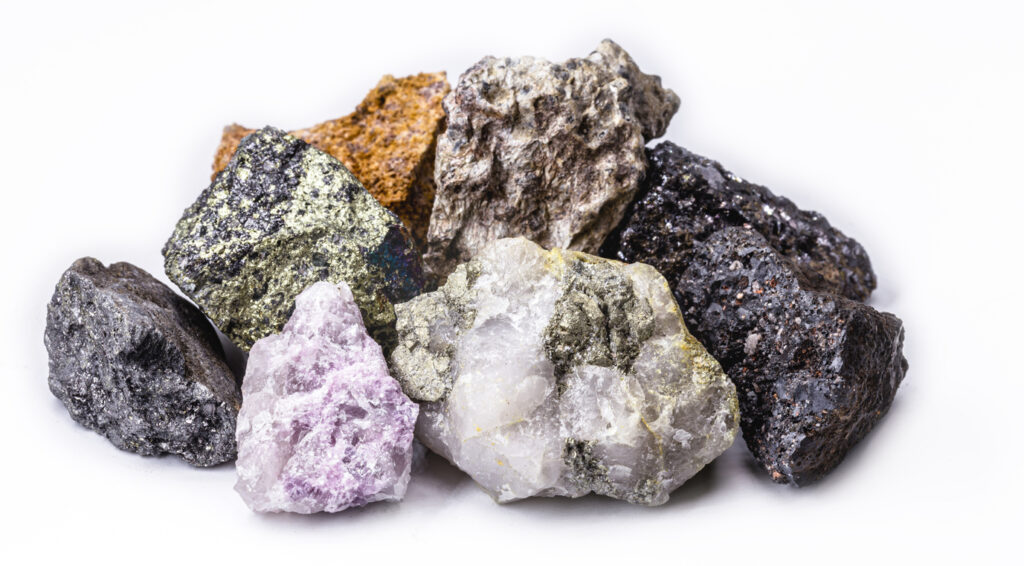
With these characteristics, Kabinett wines and their styles stand as an excellent representation of Germany’s rich wine culture and tradition.
Sweetness and Alcohol Content
Kabinett wine, originating from Germany, is often characterized by its distinct balance between sweetness and alcohol content. These wines are produced from fully ripened grapes, resulting in a perfect harmony of flavor and texture.
The alcohol content in Kabinett wines typically ranges between 7% and 10%. Lower alcohol content allows the distinct fruity notes to shine through, without being overpowered by the alcohol. Consequently, Kabinett wines are highly valued for their light and refreshing qualities.
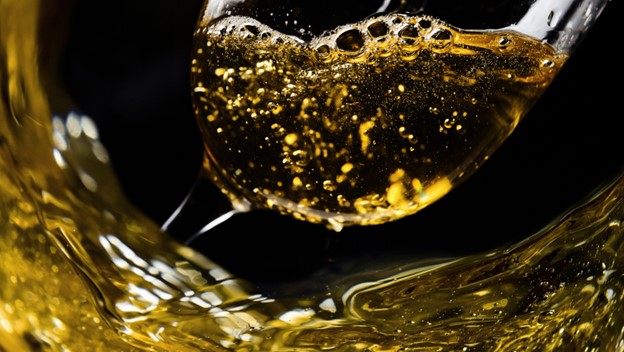
In terms of sweetness, Kabinett wine’s residual sugar content varies from 18 to 45 grams per liter. This variation is influenced by the winemaking process. Fermentation can be stopped earlier to retain higher sugar levels, or allowed to continue for a drier result. The sweetness levels classify Kabinett wines as either semi-sweet or off-dry.
To summarize, Kabinett wines are notable for their:
- Alcohol content between 7% and 10%
- Residual sugar content between 18 and 45 grams per liter
- Classification as semi-sweet or off-dry

Essentially, Kabinett wines provide a beautiful balance of sweetness and alcohol content. This makes them an ideal choice for wine enthusiasts who appreciate a lighter, refreshing taste.
Floral Aromas
German Kabinett wines, specifically Rieslings, are known for their beautiful and distinct floral aromas. These delicate scents are a hallmark of the Riesling grape variety. They contribute to the overall charm and elegance of Kabinett wines.

Floral aromas in German Rieslings can vary depending on the region where the grapes are grown. For example, Rieslings from the Mosel region often exhibit more delicate, spring-like scents such as white flowers, lilac, and honeysuckle. In contrast, Rieslings from the Pfalz and Rheingau regions may display stronger, more complex floral notes like jasmine, elderflower, and orange blossom.
These enchanting floral aromas in Kabinett wines can be attributed to the specific growing conditions and terroir in German vineyards. Cooler climates, like those in Germany, encourage the development of delicate and nuanced aromas in the grapes. Additionally, the slate and limestone-rich soils common in German wine regions contribute to the mineral and floral qualities found in Rieslings.

To fully appreciate the delightful floral aromas of German Kabinett Rieslings, it is recommended to serve the wine slightly chilled. Serve it around 45-50°F (7-10°C). This cooler temperature helps preserve and showcase the delicate aromas. This allows them to shine as a central aspect of the wine’s character.
In summary, the floral aromas found in German Kabinett Riesling wines are a key component of their allure and appeal. The climate, terroir, and careful cultivation of the grapes result in these captivating scents that delight wine enthusiasts and casual drinkers alike.
Comparison with Other Riesling Categories
Kabinett wines, as a category of Riesling from Germany, are distinct in a few ways when compared to other Riesling categories such as Spätlese, Auslese, Beerenauslese, and Trockenbeerenauslese. These wines differ mainly in their levels of sweetness, ripeness, and complexity.
Kabinett vs Spätlese
Kabinett wines are known for their lower sugar levels, resulting in a lighter and usually drier style. In contrast, Spätlese wines are made from grapes that have been allowed to ripen longer on the vine. This way producing a wine with more body, higher sweetness, and often greater aging potential. It is important to note that both Kabinett and Spätlese can range from dry to semi-sweet. Winemakers have flexibility in adjusting sugar levels during fermentation.
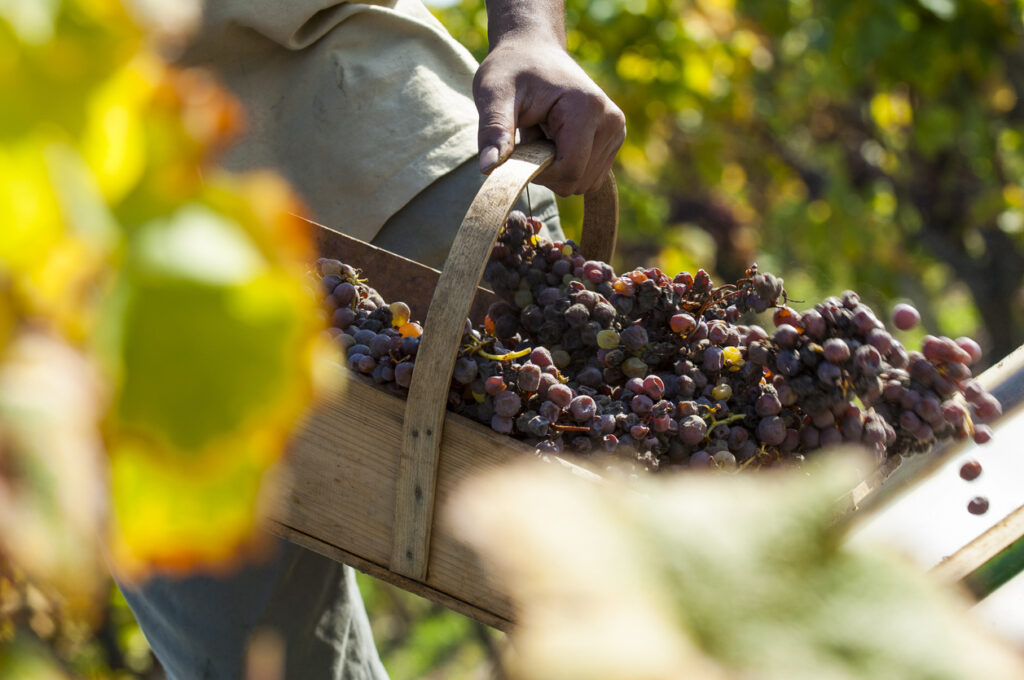
Kabinett vs Auslese
While Kabinett wines have a delicate, subtle profile and lower alcohol content, Auslese wines represent a step up in terms of ripeness and sweetness. Auslese grapes are hand-selected to ensure a high concentration of sugar, resulting in richer, sweeter wines that can age beautifully. These wines often display more pronounced fruit flavors and complexity compared to Kabinett wines.

Kabinett vs Beerenauslese and Trockenbeerenauslese
Beerenauslese and Trockenbeerenauslese are considered dessert wines due to their high sugar content. These wines are produced from late-harvest grapes affected by noble rot, which concentrates the sugars and flavors. Beerenauslese wines are intensely sweet and rich, often with a honeyed, nectar-like quality.
Trockenbeerenauslese wines, the pinnacle of sweetness in German Rieslings, are made from grapes that have shriveled on the vine. This further intensifies the flavors, sugar content, and creates an opulent dessert wine. In comparison, Kabinett wines are lighter, fresher, and exhibit a more balanced acidity.

In summary, Kabinett wines offer a lighter, more delicate expression of German Riesling compared to the richer, sweeter profiles found in Spätlese, Auslese, Beerenauslese, and Trockenbeerenauslese. Each category showcases the versatility of Riesling grapes, with varying levels of sweetness, ripeness, and complexity.
Food Pairing
Kabinett wine, a delicate and refreshing German wine, is known for its lower alcohol content and pleasant sweetness. This makes it a versatile choice for food pairing. The wine’s high acidity and fruity flavors complement a wide range of dishes, from light appetizers to rich main courses.
Appetizers
When it comes to appetizers, Kabinett pairs well with seafood dishes. The wine’s crisp acidity cuts through the richness of smoked salmon, while its fruity notes enhance the delicate flavors of oysters or scallops. This light-bodied wine also works well with shrimp cocktail, sushi, and mussels.
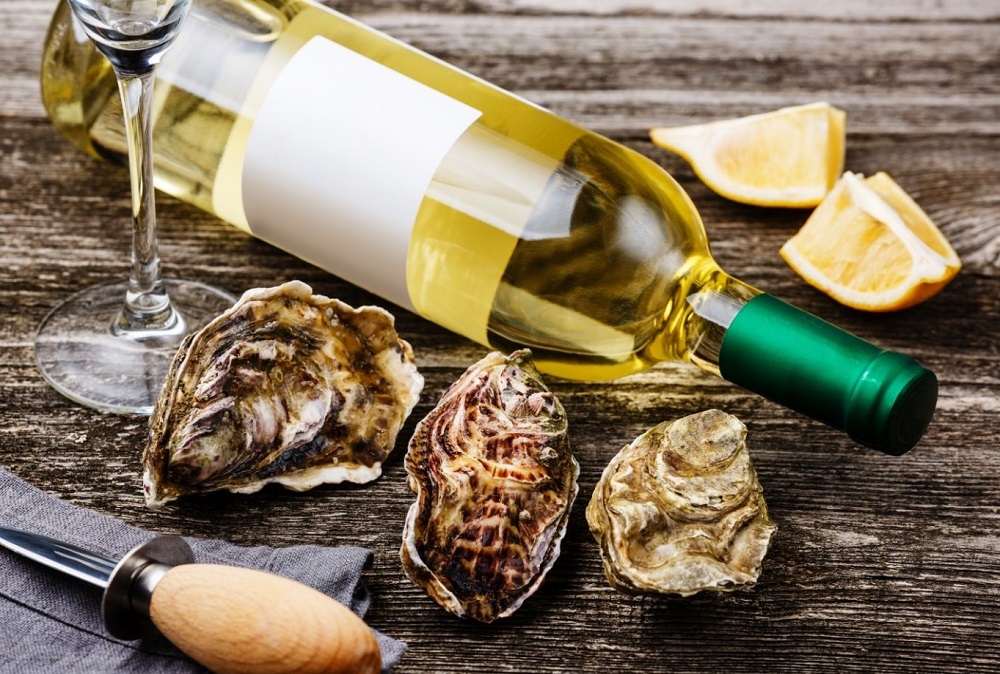
Main Courses
For main courses, the versatility of Kabinett wine becomes even more apparent. Its sweetness and acidity balance out the richness of dishes like roasted pork, duck breast, or glazed ham. When it comes to fish, try serving Kabinett with grilled salmon or pan-seared trout. The wine’s fruity notes will bring out the natural sweetness in the fish. On the vegetarian side, Kabinett pairs wonderfully with hearty salads, grain-based dishes like quinoa or couscous, and even flavorful tofu dishes.
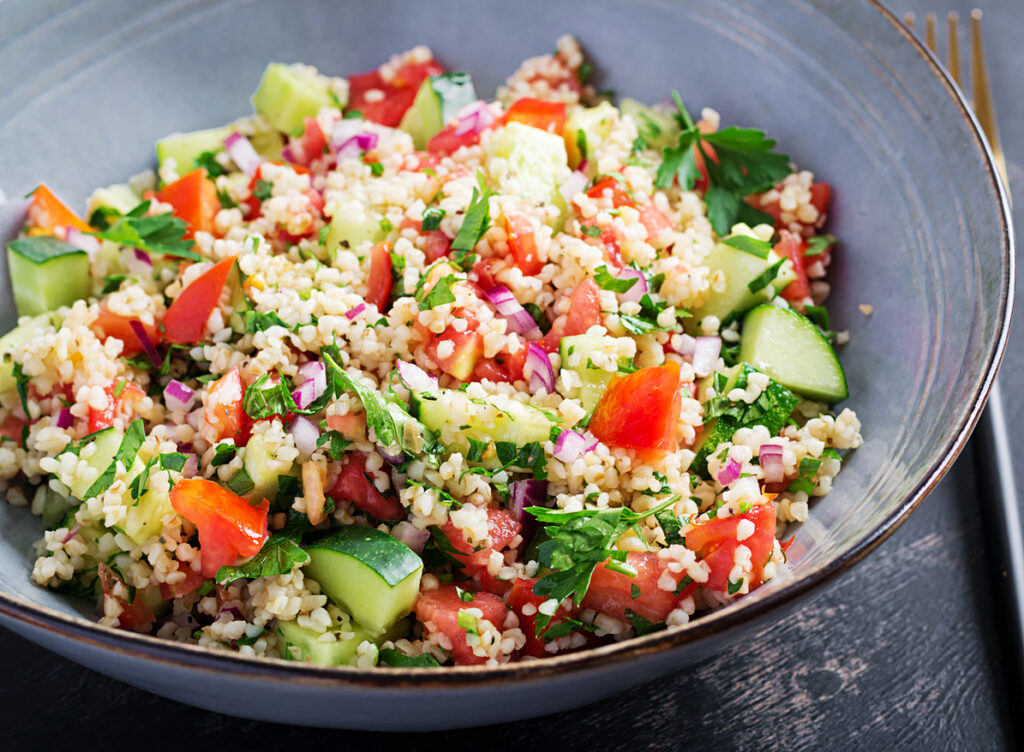
Cheese
Kabinett wine is also an excellent choice for pairing with cheese. The wine’s acidity contrasts with the richness of soft, creamy cheeses like Brie and Camembert. For a stronger flavor, consider blue cheese; the bold flavor of the cheese complements the sweetness of the wine. The high acidity in Kabinett makes it a great match for sharper cheeses like cheddar.
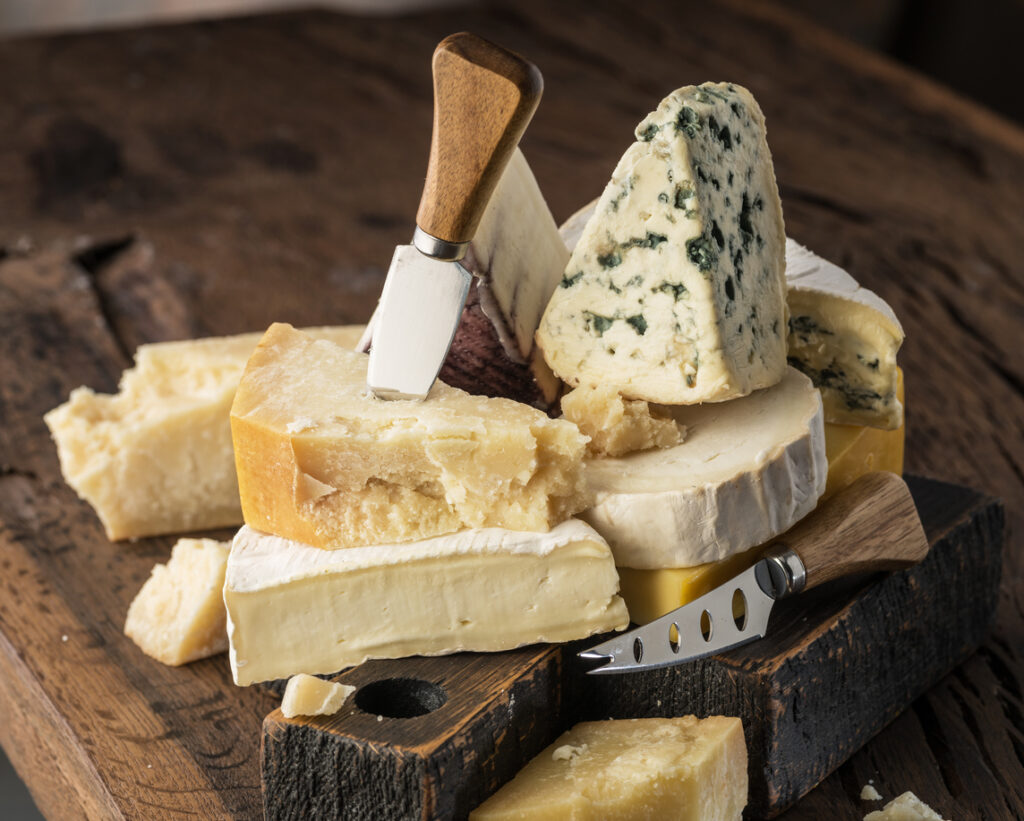
Dessert
Finally, don’t forget about dessert! Kabinett wine’s light sweetness can enhance fruit-based desserts like apple pie or peach cobbler. Alternatively, pair it with citrusy treats like lemon bars or key lime pie, as the acidity of the wine and the citrus flavors create a harmonious balance on the palate.
In summary, Kabinett wine from Germany shines when paired with various dishes. From seafood appetizers to rich main courses, and from cheese to desserts, Kabinett offers a delightful food pairing experience.
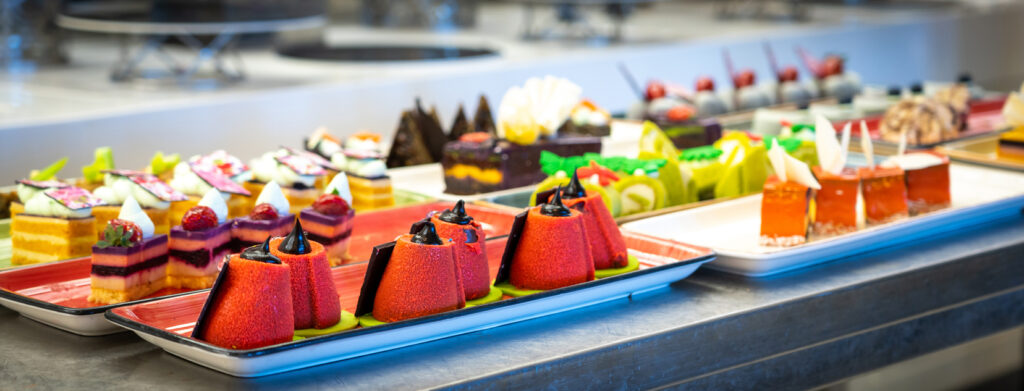
Accessibility and Popularity
Kabinett wines, originating from Germany, have gained popularity due to their unique characteristics and accessibility. As a prime example of German Riesling, Kabinett wines are known for their light body, refreshing acidity, and lower alcohol content. These qualities make them a popular choice for wine enthusiasts who appreciate a well-balanced, easy-to-drink wine.
In Germany, Kabinett wines are regionally produced, notably in the Mosel, Rheingau, and Pfalz areas. Thanks to the increased global demand for these wines, they have become more accessible to international consumers. Many wine retailers and online shops offer a diverse selection of Kabinett wines, catering to various tastes and budgets.

Their accessibility is enhanced by their affordability. Kabinett wines are generally priced lower than other German wines, such as Spätlese and Auslese, making them an attractive choice for casual drinkers and connoisseurs alike. This affordability stems from the fact that Kabinett grapes are harvested earlier, resulting in less labor and production costs.
The popularity of Kabinett wines is also cultivated through wine-tasting events and educational programs. Many German wineries and wine distributors organize tastings where attendees can sample Kabinett wines alongside other types of German Rieslings. This exposure allows potential consumers to appreciate the distinct qualities of Kabinett wines and encourages further exploration into German wine culture.
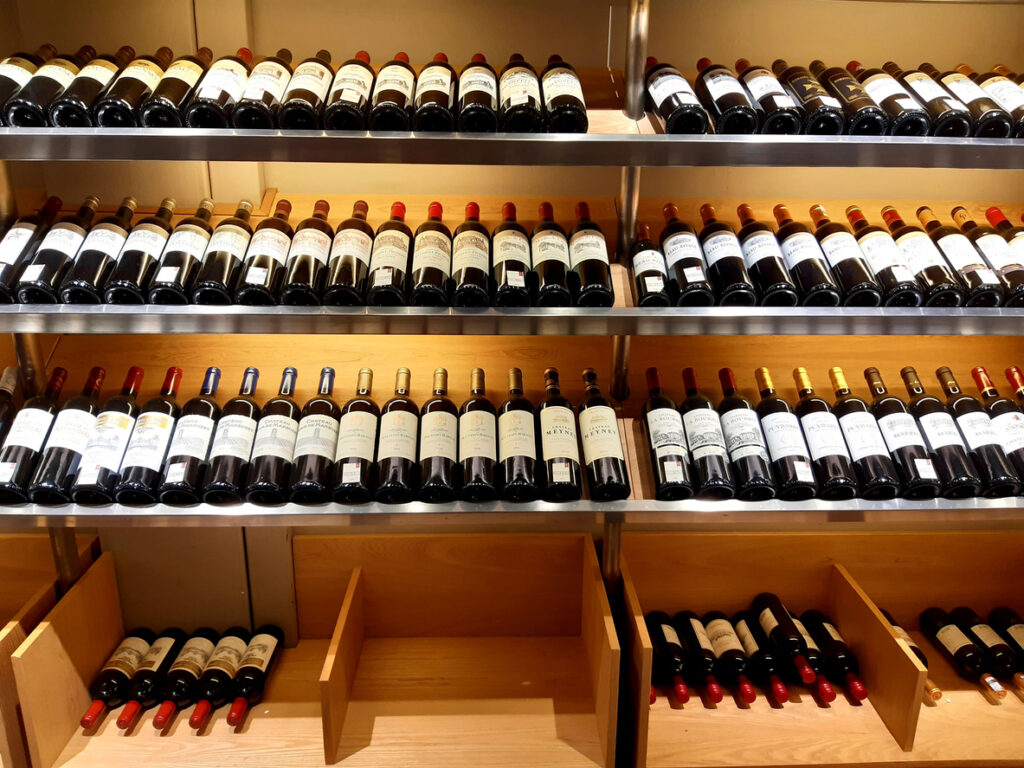
In summary, the accessibility and popularity of Kabinett wines can be attributed to their appealing characteristics. Availability through various retail channels, affordable prices, and promotional efforts by German wineries and distributors underline its popularity.

